Also available in: Deutsch
The Japanese archipelago consists of four large main islands and numerous partially inhabited and partially uninhabited islands. The southernmost of the main islands is called Kyushu and is relatively unknown to most foreign tourists.
Southern Japan Tips – The Bucket List for Kyushu
Of course, it is not surprising that most tourists, when they travel to Japan for the first time (article coming soon in English), initially want to see more well-known places such as Tokyo, Kyoto, Osaka, Hiroshima, or Mount Fuji. However, for those who have caught the Japan fever and are traveling to the Land of the Rising Sun for the second or third time, the south still holds many beautiful places, unique foods, and local culture that are worth discovering.

In the following, we will introduce you to four of the prefectures that are part of the Kyushu region and hopefully make a trip to this part of Japan appealing to you. We mean that literally because here you will not only learn more about activities and travel destinations, but also about dishes and foods from the local cuisine that definitely belong on your bucket list.
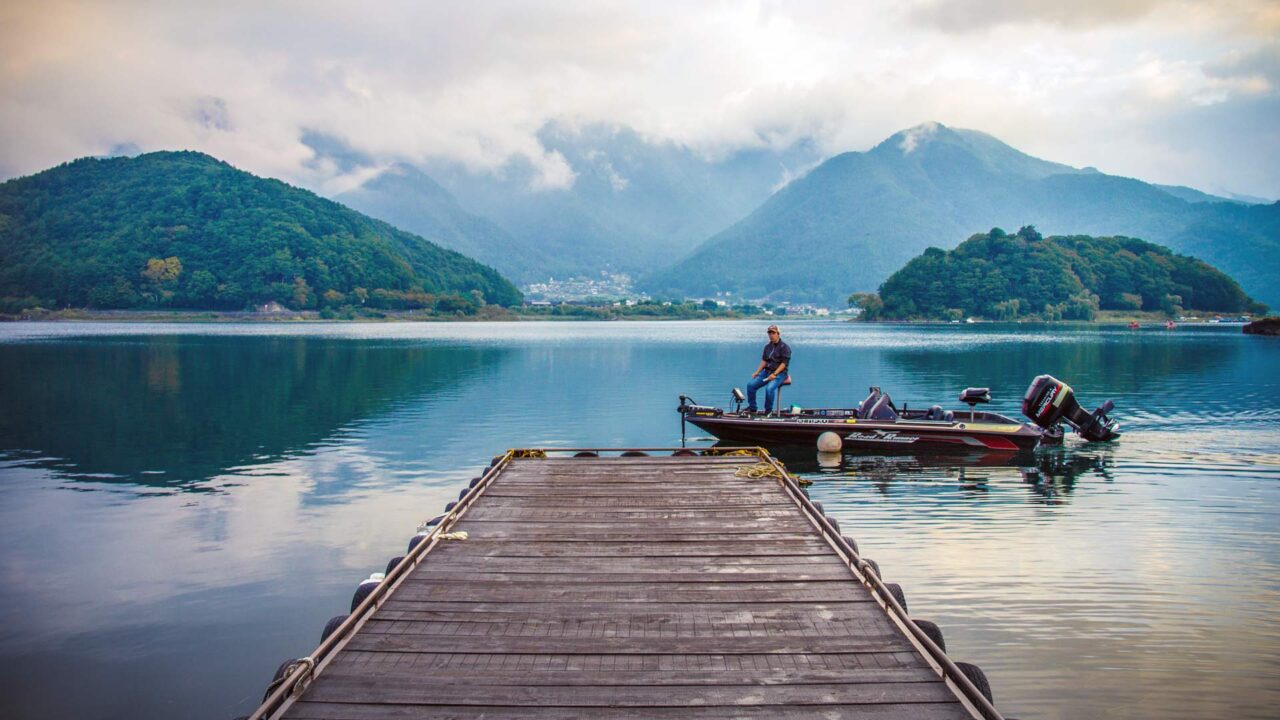
1. Fukuoka – Kyushu’s Capital
The port city of Fukuoka in the prefecture of the same name is located quite in the north of the island and is effortless and pleasant to reach via the Main Line of the Shinkansen. Especially in recent years, the annual number of tourists here has been steadily increasing, as Fukuoka is no longer a hidden gem.
Very close to the main station are the two parts of the city center: Hakata and Chuo. Here you will also find the huge shopping and entertainment center called “Canal City”. In the heart of the complex is an artificially created canal, which provides a pleasant coolness in the summer and is absolutely “instagrammable”.
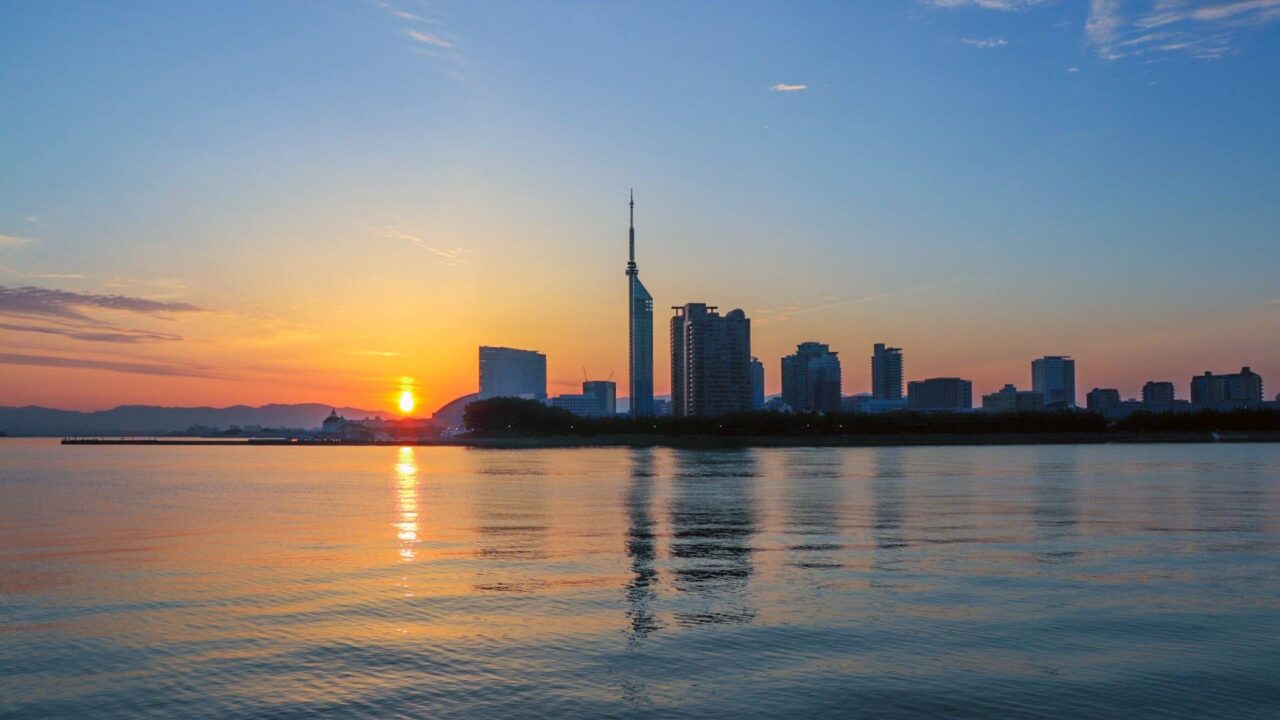
Between the two districts lies the small district of Nakasu, which is known for its street food stalls. The small street restaurants with 3-5 seats open daily in the evening and usually offer hearty dishes such as Hakata Tonkotsu Ramen soups or Yakitori skewers (chicken).
You should definitely try both, and in the special, lively atmosphere of Nakasu, it tastes twice as good. Mentaiko dishes are also highly recommended in Fukuoka. Mentaiko is roe (from Pollock), which is marinated in a slightly spicy chili sauce before it lands in the pots of specialty restaurants.
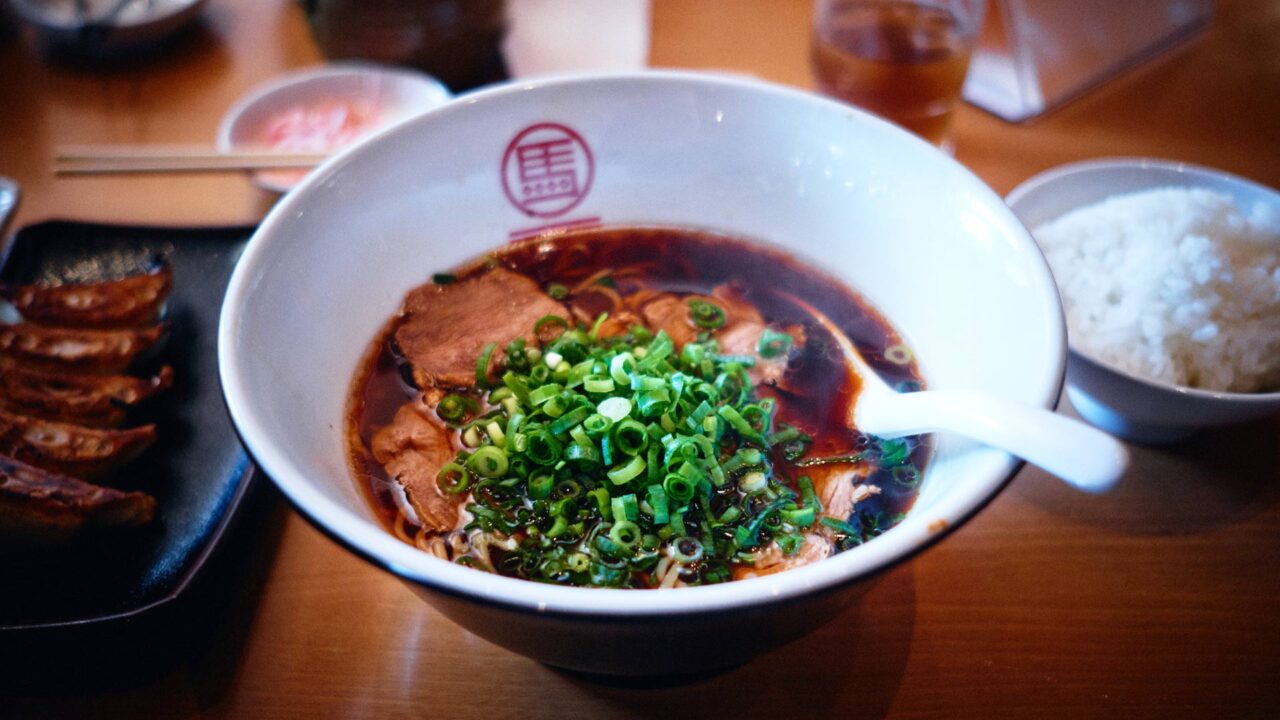
From Fukuoka City, you can also plan some wonderful day trips, such as to the traditional temple of Dazaifu. The city is about a 30-minute drive from Fukuoka, but it can also be easily reached by public transportation. On the way to the temple, you walk along a long street where there are various souvenir shops and also Yaki-Mochi, sweet grilled rice cakes. This is a local specialty that makes for a great snack in between.
The entrance gate to the Dazaifu Tenmangu Temple is richly decorated, but you should still make sure to take a big step over the threshold. It is said that stepping directly on the large wooden beam marking the threshold brings bad luck.
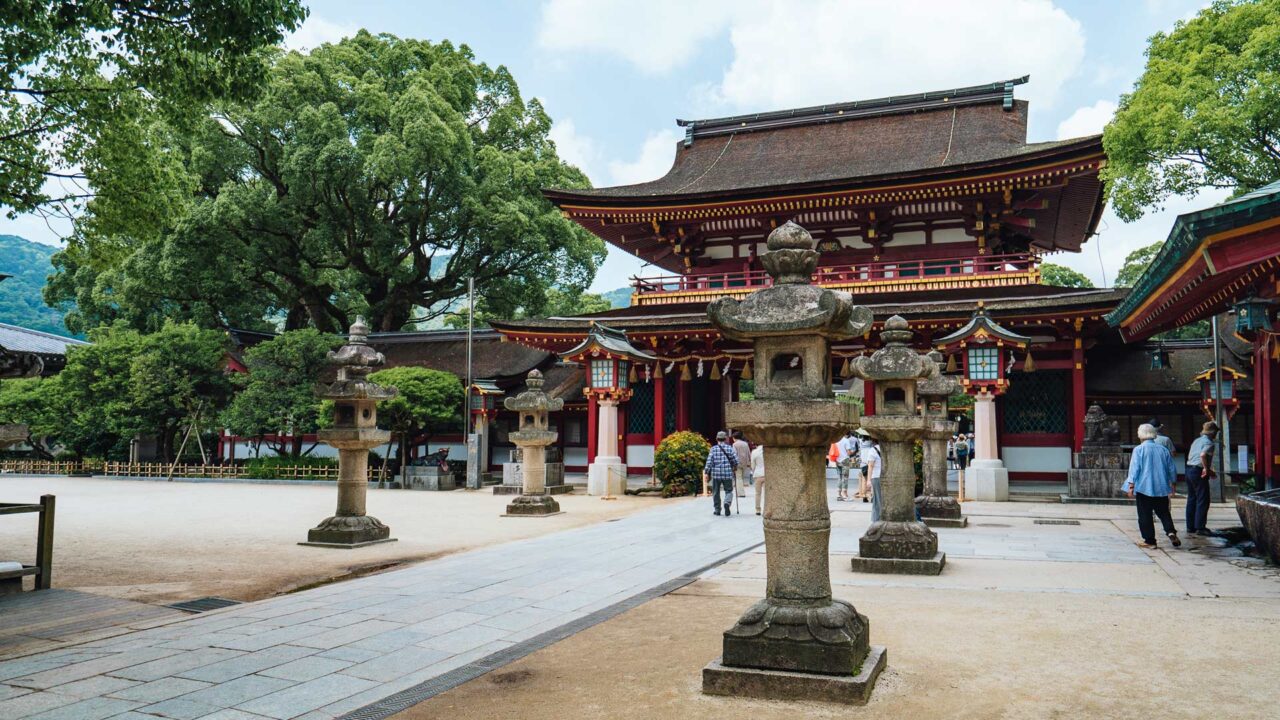
Another trip takes us to the other side of the bay of Fukuoka to the Umi no Nakamichi theme park. This is especially recommended in the spring, as you can ride through the seemingly endless sea of flowers on a (rented) bicycle. Depending on the month, different flowers bloom here, beautifying the landscape. The park is also great for families, as there are small “play stations” scattered throughout the park. These offer fun and joy not only for young children but also for young-at-heart adults.
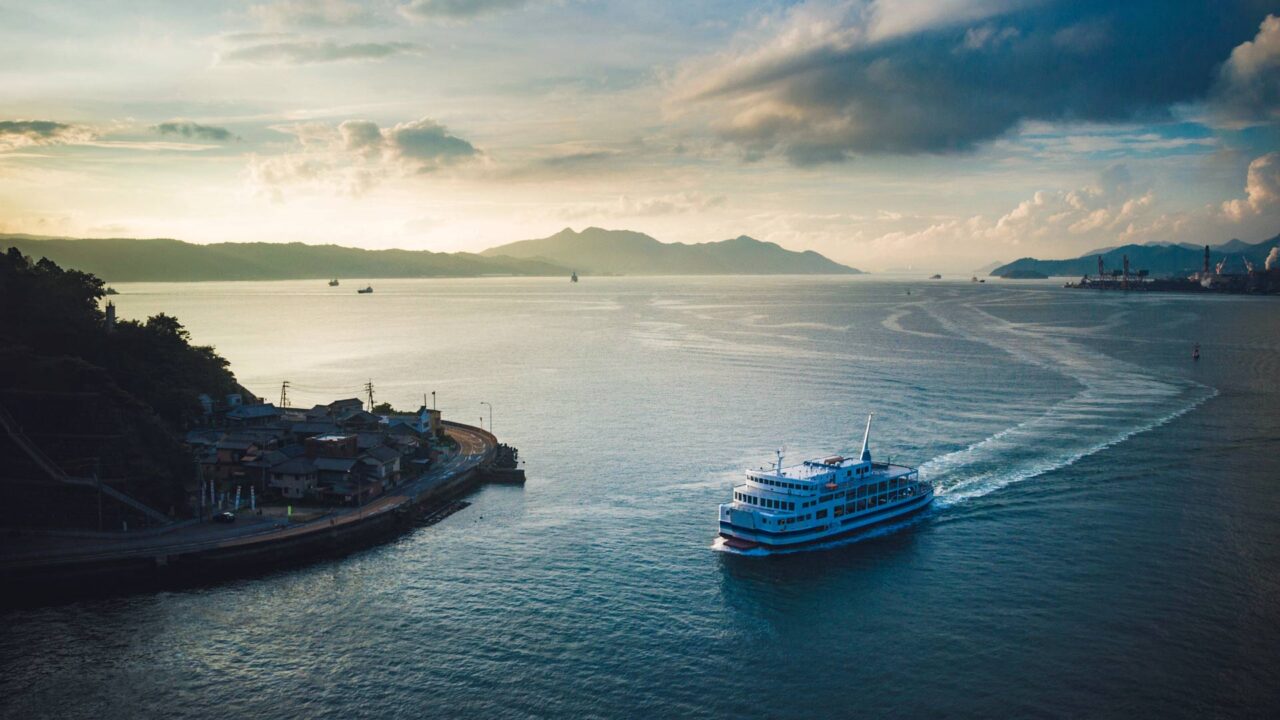
2. Nagasaki – City with International Flair
South of Fukuoka lies the city of Nagasaki, which became known for the atomic bombing by American troops towards the end of World War II. However, for centuries before that, the city was particularly popular with traders due to its harbor location. For nearly 250 years (during Japan’s isolation from 1604-1886), it was virtually the only point of contact with foreign countries, as foreigners who came to Japan during this period were simply killed.
Only in Nagasaki were Chinese traders allowed to enter Japanese territory under strict supervision. Trade relations were also maintained with the Netherlands, but Dutch traders were not permitted to enter the Japanese “mainland.” Instead, they were housed on an artificially constructed island in Nagasaki Bay, which was connected to the mainland by only a narrow bridge. Any Japanese merchant who wished to contact the Dutch traders had to register and was allowed to enter the “Dutch Island” for a limited time.
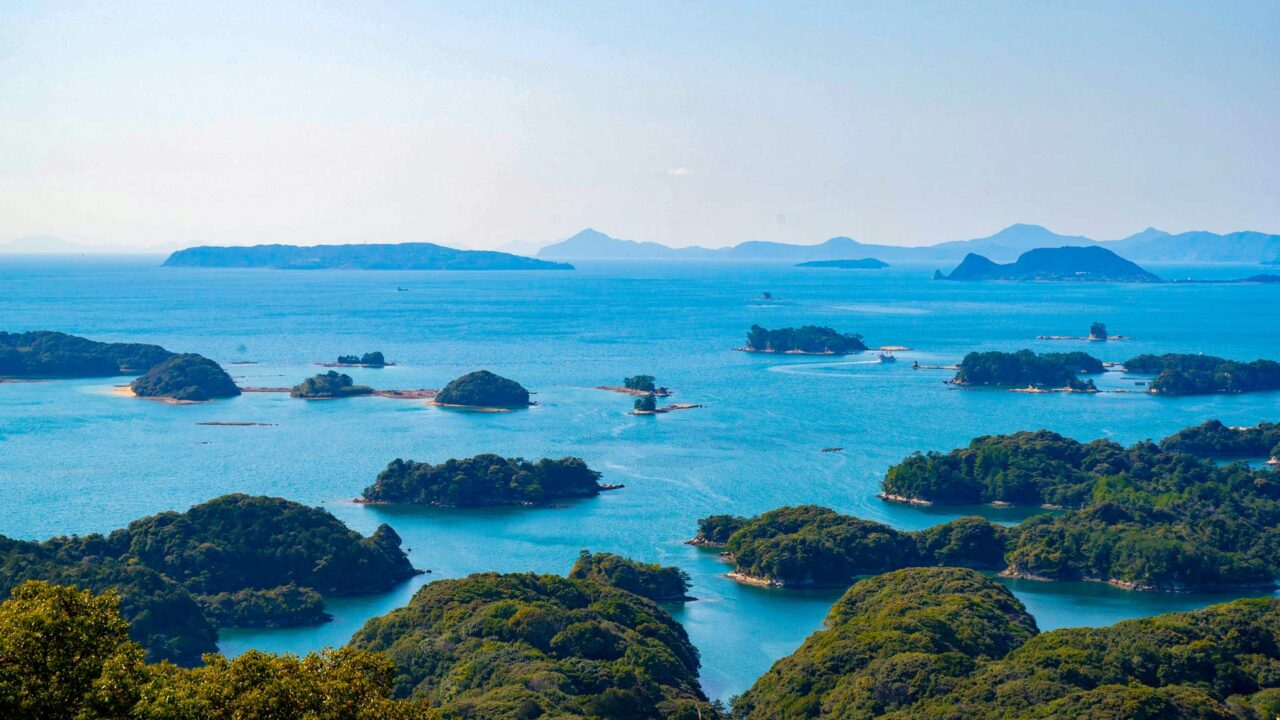
The island is called Deshima (Dejima) and can be visited today as an open-air museum. Besides the island, you can see traces of this time all over the city. There is a large Chinese and Dutch settlement, which emerged shortly after the opening of the country around 1900, and houses and villas from that era are still open for viewing today. Additionally, the cuisine of Nagasaki is influenced by many foreign (Chinese and European) elements.

One typical specialty from Nagasaki is the Shippoku, which means ‘international table.’ A variety of dishes from Japan, China, and the ‘West’ are served on a large, round, and rotating tray. You usually find these trays in Chinese restaurants. Two other dishes that should definitely be on your bucket list are Nagasaki Wagyu and Guzouni.
Abroad, Wagyu beef from Kobe is naturally much better known, but don’t be fooled by this; they are absolutely in the same league quality-wise. The meat is so tender that it literally melts on your tongue and fills your mouth with an incomparable deliciousness. Guzouni is a soup that originally comes from the Shimabara region and consists of more than 10 ingredients. It includes seafood, Mochi, and so-called mountain vegetables. The broth itself is rather mild and beautifully contrasts the other hearty and slightly salty components of the soup.
Due to the traditionally international orientation, you can also see Chinese influences in the temples and shrines, some of which have been around for over 400 years. Along Teramachi-dori Street, one temple lines up after another. Among them are the Kofukuji and Sofukuji, which are very popular with tourists. But if you prefer something quieter, you should visit the Suwa Shrine. It is also very beautiful and dates back to the 15th century.
Directly adjacent to the city is Mount Inasa, which you can either hike up or conveniently reach by cable car. From here, you have an absolutely fantastic view of the city and the bay. The nighttime view, in particular, is absolutely enchanting and has even been chosen as one of the top 3 nighttime views in Japan. You definitely shouldn’t miss it.
3. Kagoshima – Onsen, Nature, and Fresh Food
Kagoshima is the southernmost prefecture on the island of Kyushu and is still largely untouched by tourists. So if you want to get away from the tourist traps and enjoy your vacation well and, above all, cheaply, Kagoshima should be at the top of your list. Compared to Germany, Japan is quite expensive, especially when it comes to transportation and food. However, since the prefecture, apart from Kagoshima City, is more rural, it’s possible to get by on a small budget here.
It’s especially nice to drive along the coastal road of Kagoshima Bay and enjoy the view. There are also many beautiful, deserted beaches along the route that invite you to linger. Here you can really relax and unwind.
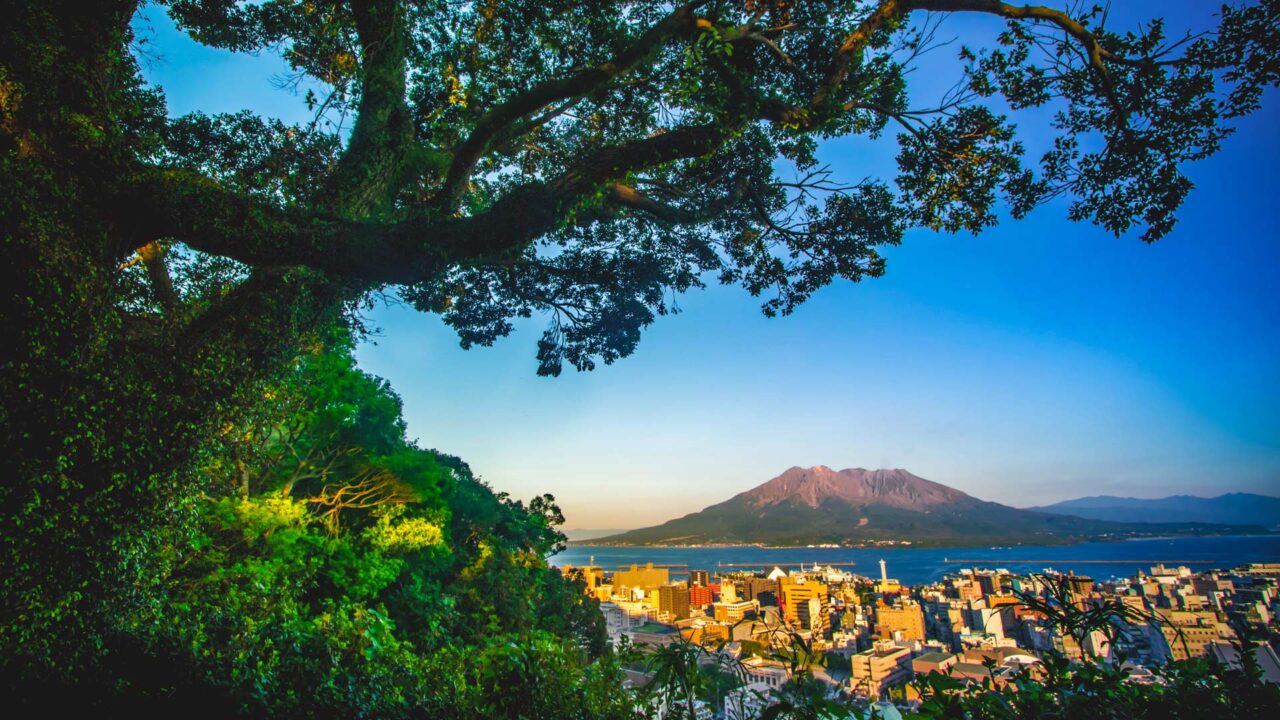
From Kagoshima City, you can take a ferry to the volcanic island of Sakurajima for a small fee. Sakurajima is one of Japan’s most active volcanoes, so you should check with the tourist office beforehand to see if an eruption is expected soon. But the real highlight of the crossing is the Udon soup. For a bargain price, you get a bowl of really delicious wheat noodles that you can slurp while gazing at the sea.
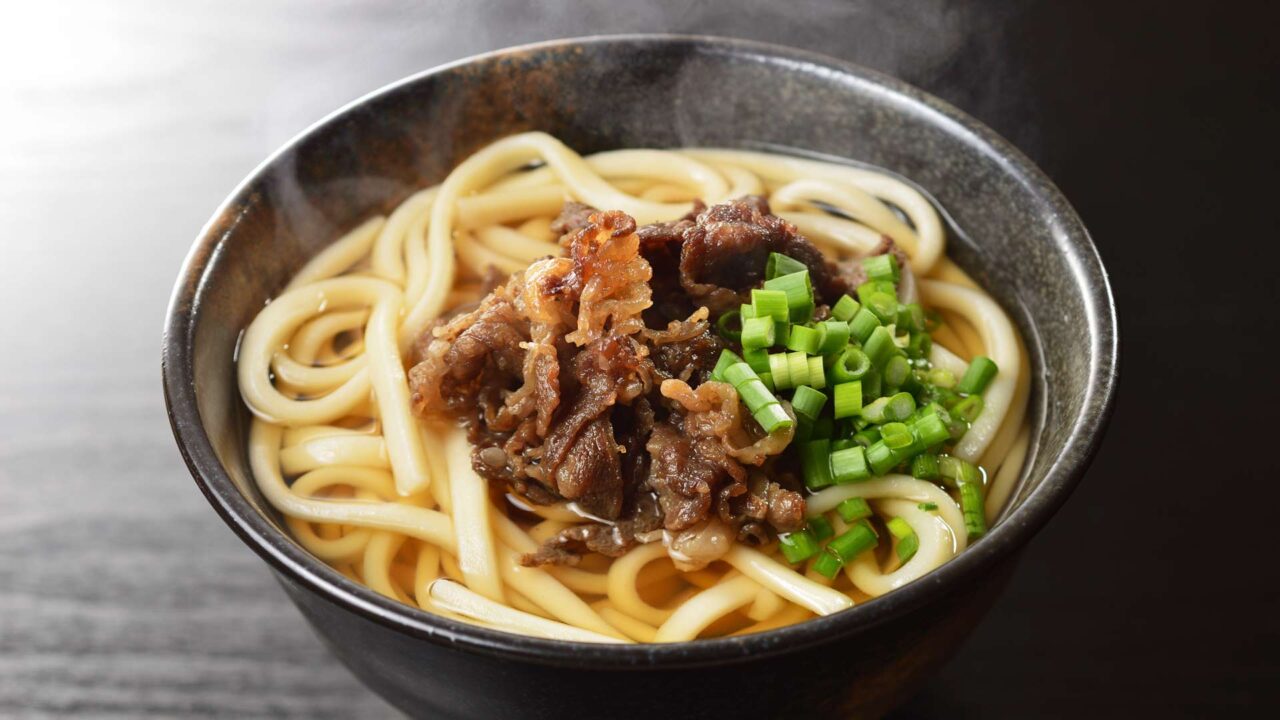
If you drive south from the city, you will reach the city of Ibusuki in about an hour. You should definitely visit the Ibusuki Suna Mushi Onsen, which is a sand Onsen. You can imagine it as being wrapped in a borrowed long bathrobe, buried in warm sand from your toes to your neck, and then sweating and detoxing in peace for the next 30 minutes. The sand is heated year-round by underground thermal activity. But don’t worry: if you want to get out earlier because it’s too warm for you, the nice staff will dig you out earlier.
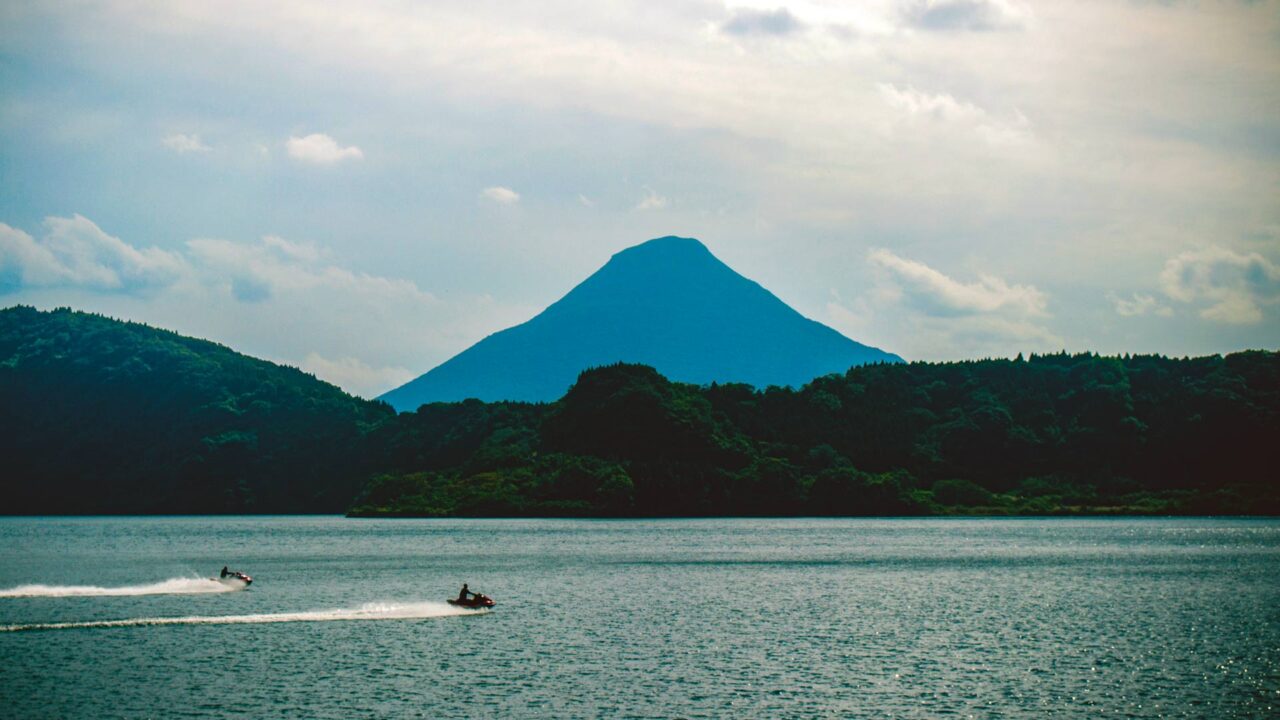
In Kagoshima, most dishes are served super fresh. Especially Sashimi and other raw dishes like Tori-Sashi (raw, thinly sliced chicken with soy-ginger-garlic sauce) are top-notch here. Additionally, there is a specialty called Kurobuta. This is the Japanese word for “black pig,” and the tender and delicious pork comes from a special breed of pig that has black skin. The meat is, of course, not black but is a true delicacy when thinly sliced and eaten as Shabu-Shabu (Japanese fondue).
For dessert, Shirokuma (polar bear) ice cream is recommended. It is a kind of shaved milk ice cream that melts on the tongue like white snowflakes and is garnished with fruits to make it look like a polar bear. It’s really sweet in both the literal and figurative sense.
4. Okinawa – The Vacation Island
Okinawa is a separate group of islands but is still considered part of Kyushu and is located about halfway between the main Japanese islands and Taiwan. Until the end of the 19th century, Okinawa was an independent kingdom known as Ryukyu. For this reason, you will find a unique culture here that resembles Japanese culture but has also incorporated many elements from Chinese and Taiwanese cultures.
For many Japanese, it is simply the overseas destination within the country, where you can fly for a beach vacation. The beaches of Okinawa are picturesque, the underwater world is breathtaking, and the food is excellent. It is a paradise for snorkelers and divers. If you are lucky, you can even swim alongside sea turtles.

Additionally, the service in Okinawa is up to the same standard as in the rest of Japan, and, of course, Japanese is spoken here. Since the end of World War II, there has been a large US military base here, so many locals speak quite good English. This is obviously great for non-Japanese tourists.
In the capital city of Naha, located in the southern part of the island, you should definitely visit Shuri-jo Castle and its adjacent gardens. Both originally date back to the 15th century and were almost completely destroyed in the Battle of Okinawa (toward the end of World War II). However, after the war, both the castle and the garden were rebuilt or replanted to their original form, so you can still admire their beauty today.
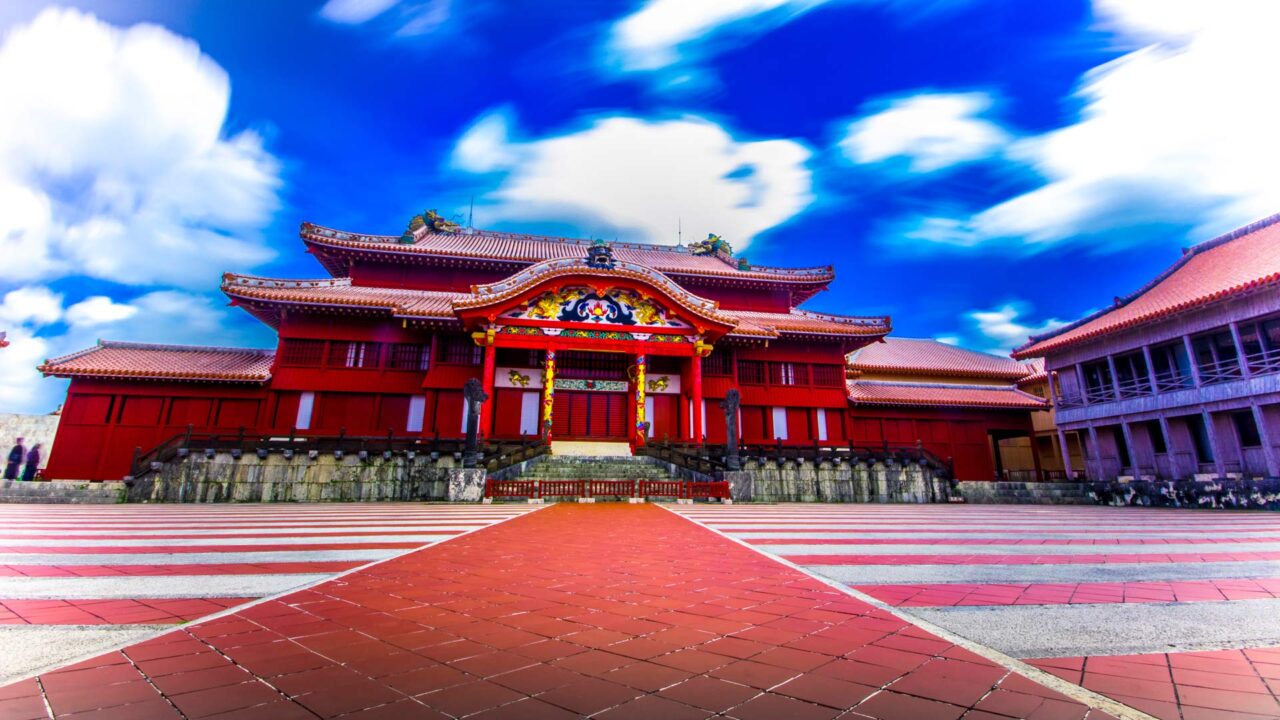
Just outside the city lies the Valley of Gangala, which was formed by the collapse of a large cave. On a tour through the rocky gorge, you can see the giant trees that grow at the edge of the gorge, whose roots reach almost 100 meters deep. The tour also leads through a cave system where the indigenous people of Okinawa lived and left their traces some tens of thousands of years ago.
In the northern part of the island, the Ocean Expo Park awaits you with the Churaumi Aquarium. It is the largest saltwater aquarium in Japan and features tanks with whale sharks, turtles, dolphins, and even bioluminescent deep-sea fish to admire. A visit here (and especially a prior reservation) is definitely worthwhile. The Expo Ocean Park is dedicated to the underwater world around Okinawa and is adjacent to a gorgeous sandy beach where you can enjoy swimming.
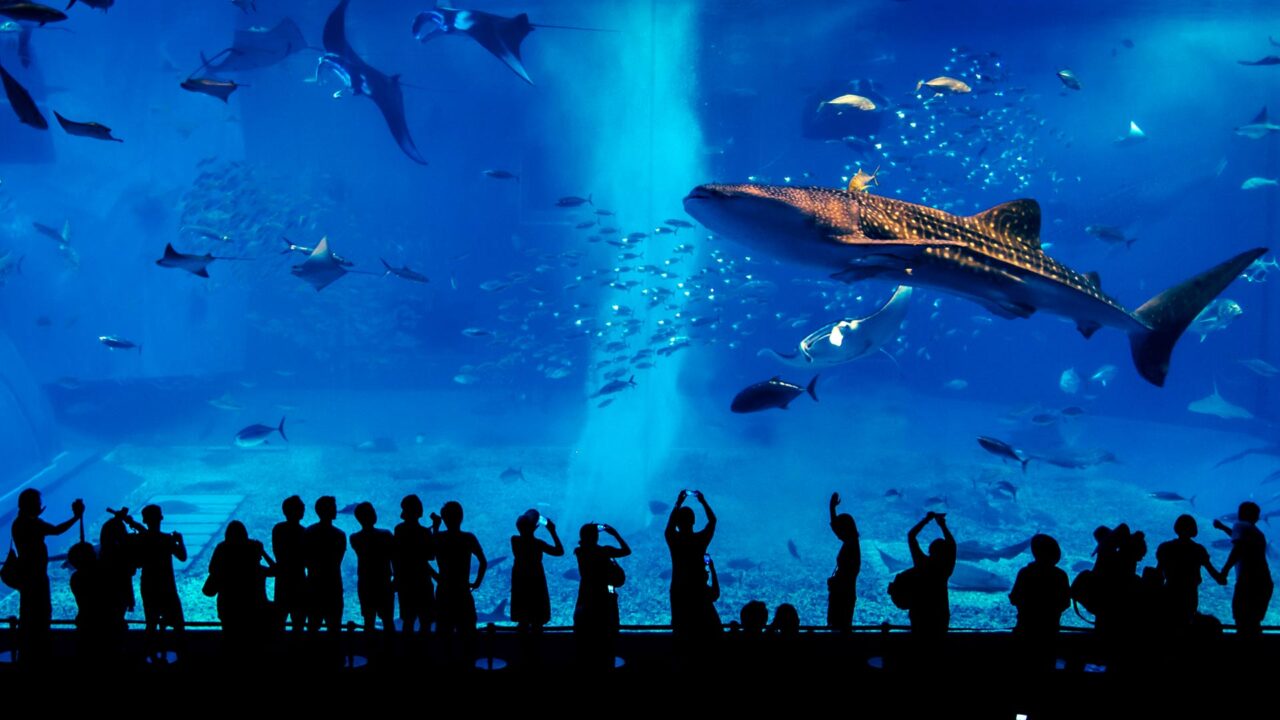
Okinawa also has a lot to offer in terms of cuisine, as Chinese and Japanese culinary arts come together here, resulting in incredibly delicious combinations. Goya Champuru should definitely be on your list. Goya is a type of bitter melon that is so popular here it has found its way into various dishes such as Champuru, burgers, and even beer.
Another dish you shouldn’t miss is the so-called Umi Budou, or sea grapes. They are actually a type of seaweed but look like small grapes. The fun part is the sensation when eating them, as they burst in your mouth and release their delicious, salty flavor. They are usually eaten with white rice to tone down the saltiness.
The third dish we recommend is called Soki Soba. This is a soup with Ramen-like noodles, but the broth is relatively light compared to most typical Ramen. It is based on Konbu (a type of seaweed) and is refined with soy sauce and Awamori (a liquor from Okinawa).
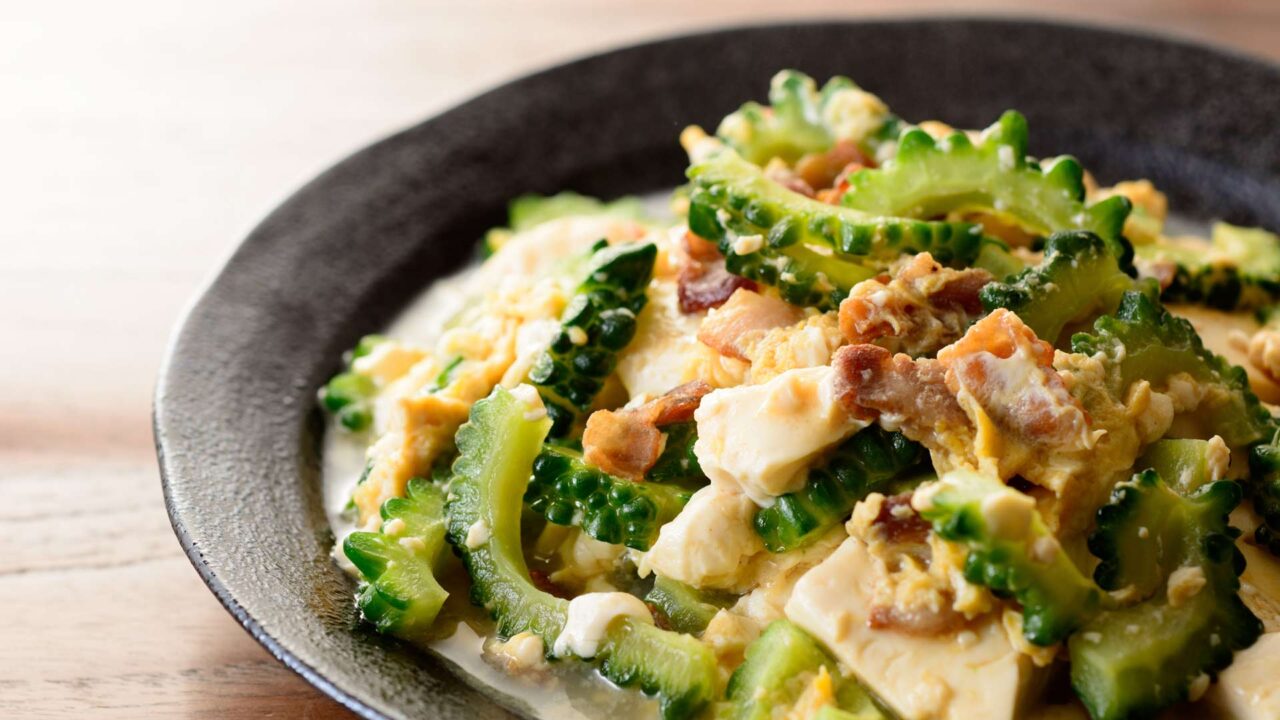
If you enjoy a glass of alcohol now and then, we have one last item for you on the list: Habu Sake. This is a Japanese sake variation where a dead viper (Habu) is soaked in high-proof alcohol for an extended period, allowing a small amount of venom to infuse into the sake. Don’t worry, the venom amount is so small that it is not dangerous for adults. However, it does tingle a bit on the tongue when you drink it. The kick is similar to eating pufferfish. There’s always a bit of residual risk.
Have you ever been to Kyushu? Do you have more tips for Southern Japan? Leave us a comment, we’re excited to hear from you!
Photos: Photo 5 (Dazaifu Temple): JHENG YAO/shutterstock.com – Photo 7 (99 Islands): Kelly.Lam/shutterstock.com – Photo 8 (Megane Bashi): Sean Pavone/shutterstock.com – Photo 10 (Udon): K321/shutterstock.com – Photo 15 (Goya Chanpuru): K321/shutterstock.com

Marcel
Hi, I'm Marcel! Blogger, author and founder of this travel blog. I've been traveling almost constantly since 2013 and love to travel in Southeast Asia and Europe. I also enjoy traveling with my child. Find out more on our About Us page.